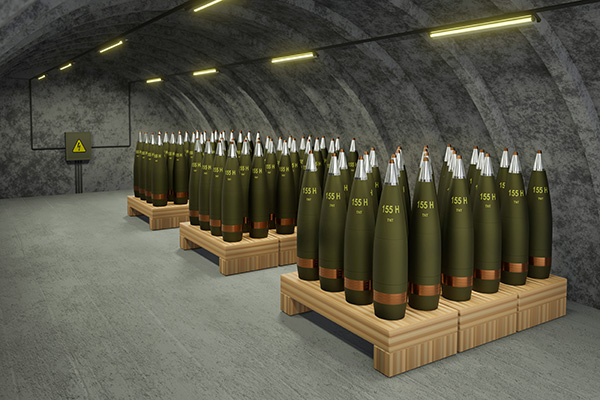The European Commission decided today to propose the use of most of the extraordinary revenues from the immobilised Russian Central Bank assets in the EU for the benefit of Ukraine, in particular for the European Peace Facility to finance the procurement of ammunition and weapons.
Around €260 billion in Central Bank of Russia assets have been immobilised in the form of securities and cash in the jurisdictions of the G7 partners, the EU and Australia, with more than two thirds of those immobilised in the EU. As previously reported, roughly two thirds of the assets are based at Euroclear, a Belgian financial services company which plays a key role in the international banking system.
It would take the EU more than two years after Russia’s illegal and unprovoked invasion of Ukraine on 24 February 2022 to arrive at this crucial proposal which still has to be adopted by the Council by unanimity. When the idea was first raised to use frozen assets to finance Ukraine’s reconstruction, the Commission thought that it was too early to explore it.
But since the first step was taken on 13 February this year, when the Council adopted a decision and a regulation clarifying the obligations of Central Securities Depositories (CSD) holding assets and reserves of the Central Bank of Russia (CBR), it did not take much time for the second step today on the use of revenues or windfall profits of the assets.
In the first step, the Council decided in particular that CSDs holding more than €1 million of CBR’s assets must account extraordinary cash balances accumulating due to EU restrictive measures separately and must also keep corresponding revenues separate. In addition, CSDs shall be prohibited from disposing of the ensuing net profits.
In February, the intention was to pave the way for a Council decision on using the net profits of the frozen assets for the recovery and reconstruction of Ukraine via the Ukraine Facility which was later adopted. In today’s Commission proposal, most of the profits or 90 % will be used as extra funding of the European Peace Facility.
The use of the profits for military support to Ukraine was clear already at the Foreign Affairs Council meeting on Monday. What was not known was the share of the profits for military aid.
The Foreign Affairs Council adopted a decision allocating €5 billion under the European Peace Facility to the military support of Ukraine. The new dedicated Ukraine Assistance Fund will add predictability to the EU’s military support. In addition, Josep Borrell, EU’s High Representative for Foreign Affairs and Security Policy, explained that the use of the revenues of the frozen assets also had been discussed.
“We had been discussion that for months,” he admitted. “There are some member states that want to have more details, but there is a strong support to take the revenues [from] the windfall profits and to use them to support Ukraine. How? Militarily, to increase the resources of the European Peace Facility, and also to support the development of the Ukrainian defense industry.”
“I´m going to table this Council decision proposal and work with the Commission to approve a Council regulation, in order for the Member States to discuss a concrete proposal before the European Union Council,” he added.
The bodies that are holding immobilized Russian Central Bank assets are supposed to manage them prudently so that they will generate profits. This they seem to have done and the profits keep growing. The annual net revenues are estimated to €2,5 – 3 billion.
To this can be added the taxes of the approximately €1.5 billion that the Federal Belgian government has levied on the profits. Until recently, Belgium earned significantly more in taxes on frozen Russian assets than it had spent on aid to Ukraine since Russia’s invasion.
But this has changed. The Belgian government decided earlier this year to use the taxes to support Ukraine. Prime Minister De Croo announced during a visit in Kyiv that half of the taxes will go to military equipment for Ukraine and the other half to humanitarian, medical or other forms of aid.
The Commission proposal will not be applied retroactively but only on the exceptional net profits since 15 February 2024. A small part of the profits, 3 %, will be used as an incentive for effective managing of the frozen assets. Another 10 % will be used as a buffer to cover risks of on-going or future litigations. If the risks are not materialized, the buffer will also be used by the EU.
The use of the remaining 83 % of the profits as financial contributions for the benefit of Ukraine is urgent, according to the Commission’s assessment. The contributions, based on estimates of the profits, will be transferred for the benefit of Ukraine twice a year. A first transfer can take place in July, provided that its proposal is adopted by the Council.
The Commission proposes a flexible use of the profits with 90 % of the net profits transferred to the European Peace Facility in 2024 (on top of the €5 billion already allocated to it) and 10 % transferred to EU spending programmes in the framework of the Ukraine Facility, subject to periodic reviews.
M. Apelblat
The Brussels Times

